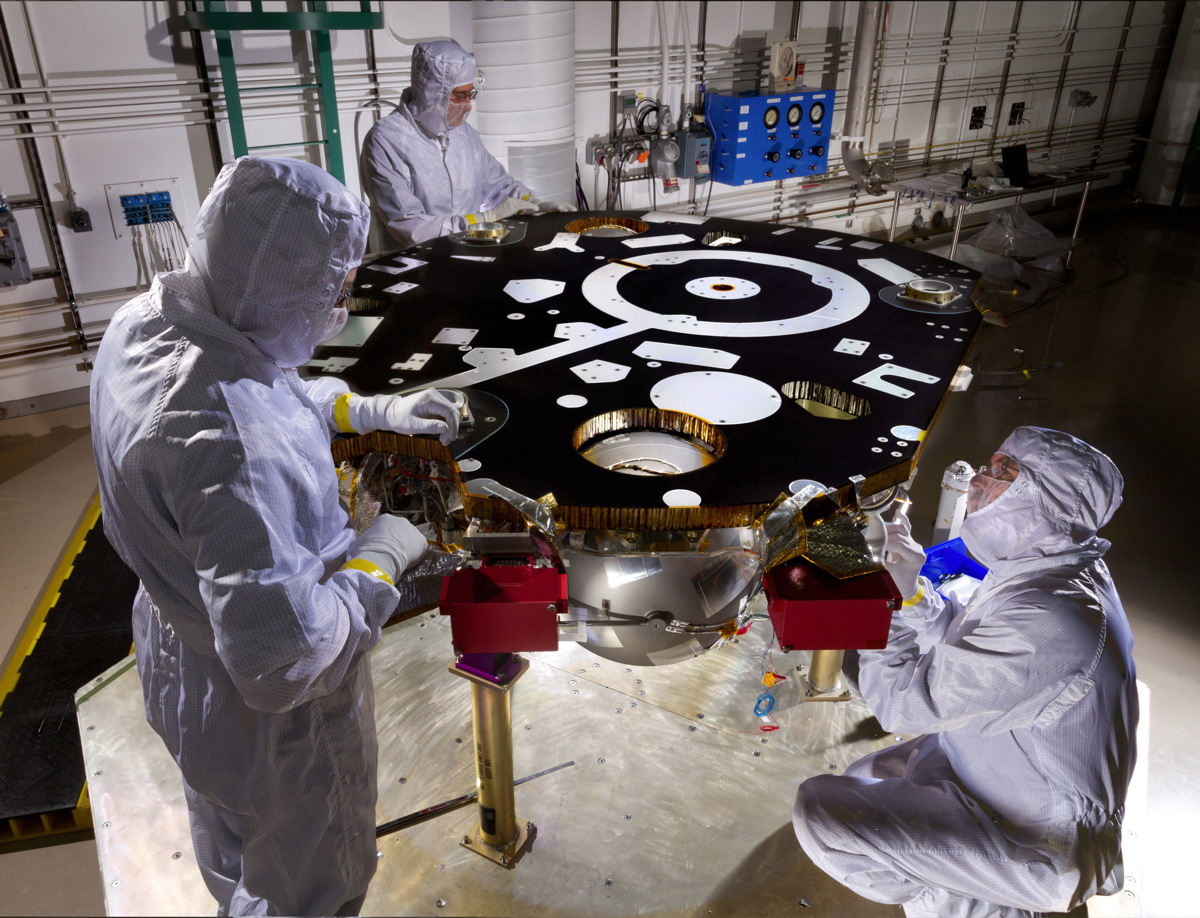NASA's Next Mars Lander Enters Final Assembly Stage

Engineers have begun putting together NASA's next Mars spacecraft, keeping everything on track for the robot's planned launch in March 2016.
Assembly, test and launch operations began recently for NASA's InSight Mars lander (short for Interior Exploration using Seismic Investigations, Geodesy and Heat Transport), which aims to study the interior of the Red Planet to learn more about how the solar system's rocky planets formed 4.5 bilion years ago.
Technicians will put together InSight over the next six months, including its instrument package, components to guide the spacecraft to Mars, and other essential elements, such as power and communications, said representatives of Lockheed Martin, the aerospace firm that's building InSight for NASA. [Images: NASA's InSight Mars Lander Mission]
InSight will be the first spacecraft to probe Mars' interior from the surface, but many of its components have already flown to the Red Planet on other missions — including NASA's Phoenix lander and MAVEN (Mars Atmosphere and Volatile Evolution) orbiter, which launched in 2007 and 2013, respectively.
"The InSight mission is a mix of tried-and-true and new-and-exciting," Stu Spath, InSight program manager at Lockheed Martin Space Systems, said in a statement. "The spacecraft has a lot of heritage from Phoenix and even back to the Viking landers, but the science has never been done before at Mars."
"Physically, InSight looks very much like the Phoenix lander we built, but most of the electronic components are similar to what is currently flying on the MAVEN spacecraft," Spath added.
InSight will carry several science instruments. The Seismic Experiment for Interior Structure will measure earthquakes on the Red Planet. The Heat Flow and Physical Properties Package will hammer 16.5 feet (5 meters) below the ground to look at subsurface temperatures, and the Rotation and Interior Structure Experiment will use the communications link between the lander and NASA's Deep Space Network to measure tiny variations in Mars' rotation. This information could reveal whether Mars has a molten core like Earth's, researchers say.
Breaking space news, the latest updates on rocket launches, skywatching events and more!
The principal investigator of the $425 million InSight mission is Bruce Banerdt of NASA's Jet Propulsion Laboratory, and mission scientists include a mix of U.S. and international researchers. Instruments are also being provided by the German Aerospace Center and the French space agency. The lander is expected to operate for at least two years on the Martian surface.
Follow Elizabeth Howell @howellspace, or Space.com @Spacedotcom. We're also on Facebook and Google+.Originally published on Space.com.

Elizabeth Howell (she/her), Ph.D., was a staff writer in the spaceflight channel between 2022 and 2024 specializing in Canadian space news. She was contributing writer for Space.com for 10 years from 2012 to 2024. Elizabeth's reporting includes multiple exclusives with the White House, leading world coverage about a lost-and-found space tomato on the International Space Station, witnessing five human spaceflight launches on two continents, flying parabolic, working inside a spacesuit, and participating in a simulated Mars mission. Her latest book, "Why Am I Taller?" (ECW Press, 2022) is co-written with astronaut Dave Williams.
